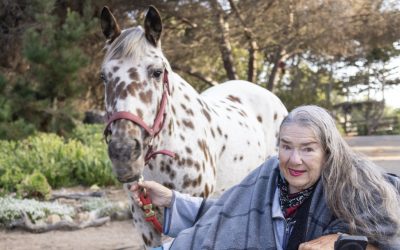It is a curious situation that the sea, from which life first arose should now be threatened by the activities of one form of that life.”—Rachel Carson, The Sea Around Us.
The above quote reminds me of the first time I read her last book— Silent Spring. She was a humble hero whose emphatic research saved our birds of prey and opened our eyes to the dangers of a common backyard pesticide—DDT. Her research-laden book launched the environmental movement; provoked the passage of the Clean Air Act (1963), the Wilderness Act (1964), the National Environmental Policy Act (1969), the Clean Water Act and the Endangered Species Act (both 1972); and led to the establishment of the (1970) Environmental Protection Agency (New Yorker magazine).
Today, there are others who dutifully complete research on behalf of us all; they are the many volunteers (too admirably humble to allow me to mention names) who work for the Morro Bay National Estuary Program (MBNEP). Their data gathering efforts ensure and protect our most scenic areas. The following pages will inform you of their conscientious, far-reaching work.
Although Earth is approximately 4.55 billion years old, the oldest known fossils are nearly 3.5 billion years old (Reference: pbs. http://www.pbs.org/wgbh/evolution/library/faq/cat06.html). Mankind is one of Earth’s newest life forms, yet it may be responsible for destroying the very source that miraculously cradles innumerable forms of life. For those of us lucky enough to spend our lives here on the Central Coast, we owe much to the “Water Warriors” who protect the waterways feeding our Morro Bay Estuary.
An estuary is where freshwater meets the salty sea. In 1995, Morro Bay was accepted into the National Estuary Program, which was established in 1987 by amendments to the Clean Water Act. Our Morro Bay Estuary is comprised of 2300 acres of brackish water that remains protected from the Pacific Ocean by a lengthy sandspit. Estuaries form when rain runs off the land through rivers, streams, or groundwater, meets and mixes with saltwater from the ocean, and creates partially enclosed bodies of water along the coast. These ever-morphing environments create more living matter each year than comparably sized areas of forest, grassland, or agricultural land.
Our particular watershed delivers both clean water and land-based pollution into our bay. It was created by the Nine Sisters, a prominent line of peaks created millions of years ago from volcanic activity that divided our Morro Bay watershed into two valleys—Los Osos and Chorro.
Our estuary and watershed encompass a range of habitats such as the following: maritime chaparral, coastal scrub, estuary, and salt marsh, grasslands, oak woodlands, and creek corridors that line creeks, streams, and rivers with dense vegetation to cool the flowing water.
This helps slow the water flow as well as stabilize the banks to control erosion. Finally, there are the sand dunes that offer sparse communities of plants such as beach Morning Glory.
Our estuary also fosters native animals such as bobcats, California Horned Lizards, Steelhead Trout, and Western Pond Turtles. In our bay, California Brown Pelicans travel by air in search of fish, Southern Sea Otters float with their pups in the calm waters, and Bat Rays glide below the pristine surface. There are more than a dozen endangered or threatened species (such as the California Red-legged Frog) protected within our estuary.
Also, strategic partners remain essential to protecting our estuary’s natural beauty as it attracts thousands of locals and tourists every year. The Estuary Program partners with landowners to implement restoration and conservation projects in the Morro Bay watershed. MBNEP (Morro Bay National Estuary) has worked with California Polytechnic State University (Cal Poly), Camp San Luis Obispo (Camp SLO), and many other organizations and private landowners (including my wife and me). “Partnering with the Estuary Program on projects has proven to be extremely beneficial to the university’s cattle operation and range-improvement practices. We are very fortunate to be located in this watershed and be able to take advantage of their cost-share programs.” (Aaron Lazanoff, Beef Operations Manager, Cal Poly).
MBNEP works with partners for protection and management in key habitat areas. A recent example of this in the watershed is a conservation easement between the Land Conservancy of San Luis Obispo County and Vintage Organics. This 227-acre farm in the Los Osos Valley produces organic flowers, vegetables, and seed along with some livestock. The agreement conserves this property in perpetuity as farmland and oak woodland and protects local water resources into nearby Los Osos Creek.
Another local ranch, the Maino property is set aside to protect 1,860 acres of woodlands, grasslands, chaparral, and serpentine outcroppings interlaced by streams and springs in the lower Chorro Valley.
Ranching and farming continues with “best management practices” according to management plans by owners that limits future development. Land acquisition is another tool for protecting habitat. Hollister Peak Ranch was acquired for habitat protection, restoration, and sediment capture. This 580-acre section, previously slated for development, becomes Chorro Creek Ecological Reserve. A popular place for sunsets, dog-walking, and shoreline strolls is at the end of Butte Drive in Los Osos. This protected 17.8-acre property contains important dune and wetland area along the shore while providing a significant link in the Los Osos greenbelt for native plants and animals to flourish. A 42-acre site acquisition prevented future development in Los Osos and the Morro Bay estuary after once being slated for development of a hotel.
One might ask, what can one do to help our MB Estuary? First, visit the MBNEP office (601 Embarcadero, Suite 11 in MB). It offers a wealth of information, pictures, games and videos for children, and recommendations for scenic sights worth seeing. One can learn how to plant species that are native to California in one’s garden; this simple act will initiate meaningful effects on the surrounding habitat, reduce one’s water bill, and more. The use of native plants also contributes to the restoration and conservation of California’s diverse native wildlife and insects by providing a patchwork of habitat. One example of a native insect species that depends on a local native plant species is the Morro Bay Blue Butterfly that relies on its larval food plant—Silver Dune Lupine. Native plants have evolved with the soil and climatic conditions of our region; they do not require fertilizer once established.
Exotic plants and grasses used for lawns are not naturally suited for our area; they need fertilizer to grow lush and pesticides to fend off insects. Unfortunately, these products are damaging to our gardens and the surrounding environment.
Thankfully, native plants require barely any fertilizer, are resistant to natural pests, and actually attract beneficial insects to our gardens such as ladybugs, lacewings, praying mantises, and pollinators such as bees and butterflies. Like fertilizers, pesticides can be washed off plants by rain and sprinklers.
They leave our gardens and run into our waterways. Even at low levels, pesticides are toxic to fish, frogs, turtles, mussels, waterfowl, and other wildlife. Incorrect pesticide use is one of many factors contributing to the decline of fish, amphibians, and other aquatic species across the United States.
The MBNEP strives to maintain our unique waterways and bay; however, it needs our help. Please volunteer or donate whatever you can to continue its ecological work and help preserve the beauty we all enjoy.





